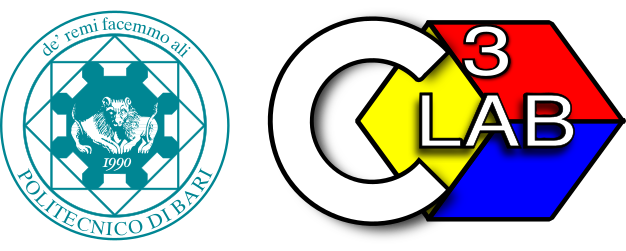|
|
| Riga 3: |
Riga 3: |
| | * there are scalability issues due to a large number of clients to serve (Multicasting) | | * there are scalability issues due to a large number of clients to serve (Multicasting) |
| | In order to reduce the bandwidth requirements for content providers, the best solution is using '''End System Multicasting''' over '''Peer-To-Peer''' ('''P2P''') networks. | | In order to reduce the bandwidth requirements for content providers, the best solution is using '''End System Multicasting''' over '''Peer-To-Peer''' ('''P2P''') networks. |
| − | [[Immagine:overlay.png|center|thumb|300px|''Overlay Network'']] | + | [[Immagine:overlay.png|center|thumb|250px]] |
| | | | |
| | End System Multicasting is a solution for ''one-to-many'' and ''many-to-many'' distribution services. Classical (IP) Multicast is based on minimal functionalities offered by IP level and it lacks of flow and congestion control, session management, and so on. | | End System Multicasting is a solution for ''one-to-many'' and ''many-to-many'' distribution services. Classical (IP) Multicast is based on minimal functionalities offered by IP level and it lacks of flow and congestion control, session management, and so on. |
Revisione 13:26, 1 Feb 2007
Nowadays the popularity of multimedia content distribution over Internet is increasing. Providing live stream or video on demand services over Internet is a challenging problem for providers because:
- video streaming is an high bandwidth demand service
- there are scalability issues due to a large number of clients to serve (Multicasting)
In order to reduce the bandwidth requirements for content providers, the best solution is using End System Multicasting over Peer-To-Peer (P2P) networks.
End System Multicasting is a solution for one-to-many and many-to-many distribution services. Classical (IP) Multicast is based on minimal functionalities offered by IP level and it lacks of flow and congestion control, session management, and so on.
End System Multicasting implements advanced distribution services at application level, so each node being involved in the distribution should forward the stream to several other nodes using a one-to-one protocol (TCP or UDP). P2P topologies should reduce this flow duplication.
In this presentation (Overlay Networks) is described the state of art of IP Multicasting. The main issues involved in this research field are the following:
- How node informations ought to be sent from one peer to the others?
- How the peers ought to be organized in the overlay network?
- use tree-based...
- ...or mesh based topologies?
- Routing:
- Use a central node in order to organize peers join/leave?
- Use Distributed Hash Tables (DHT) routing in order to reduce paths depth?
- Fragmentation:
- In the case of file download, more fragments can be received and reordered
- In the live stream case, fragmentation is impossible
- Use Multiple Description Coding (MDC)?
- Use cache fragmentation?

